First you need to know what it is you are looking at !
How to find that out…
First we have to find out what we are dealing with.
That means finding the Reference Number in the case-back, and the Serial number in the movement. This means you will have to open the back, or have a watchmaker do it for you.
(If you are new to Speedmasters – especially if you are new to vintage watches, do not skip this page. It is relevant for each of the watches we look at and should be read in conjunction with the detailed reference pages.)
Most sellers will have opened the watch and photographed the inside, but if you buy it you still ought to check when you receive it. We need to open the watch and establish:
- The calibre, 861 or 321
- The movement number. Eight digits.
- The case reference, from inside the case back.
So the watch needs to be opened, using the proper tool. Since this site was first written, Mr Pahawi has come up with this most excellent tool, that you can order by contacting him direct. See the page here.
Up until now I use this three pronged tool. This can slip, and the pegs are round not square – but it is still much safer than the two prong items that I will never use.
Here is the only opener I now use. Email Paul direct, his email is engraved on the unit. Mr.Pahawi at you know what. (Deliberately not puting email in plain text to avoid spam)
Inside you will see the movement dust cover. Sometimes this falls off, or can be lifted off with Blu-tac. If it is tight I use a razor knife and use the blade to get between the cover and the movement. Insert the blade near the crown to avoid accidentally lifting the movement,
Calibre: Is it 861 or 321?
We have to first make sure that we have an Omega, copper coloured movement of either 321 or 861.
Lemania made similar movements to both the 861 and the 321 for other brands, (and themselves) and the parts from these are a different colour, but mostly interchangeable. In fact entire Lemaina movements can be transplanted into a Speedmaster.
This is why it is so important to see inside, even if you think you don’t know what you are doing, you can still check the movement is copper coloured, signed, and numbered.
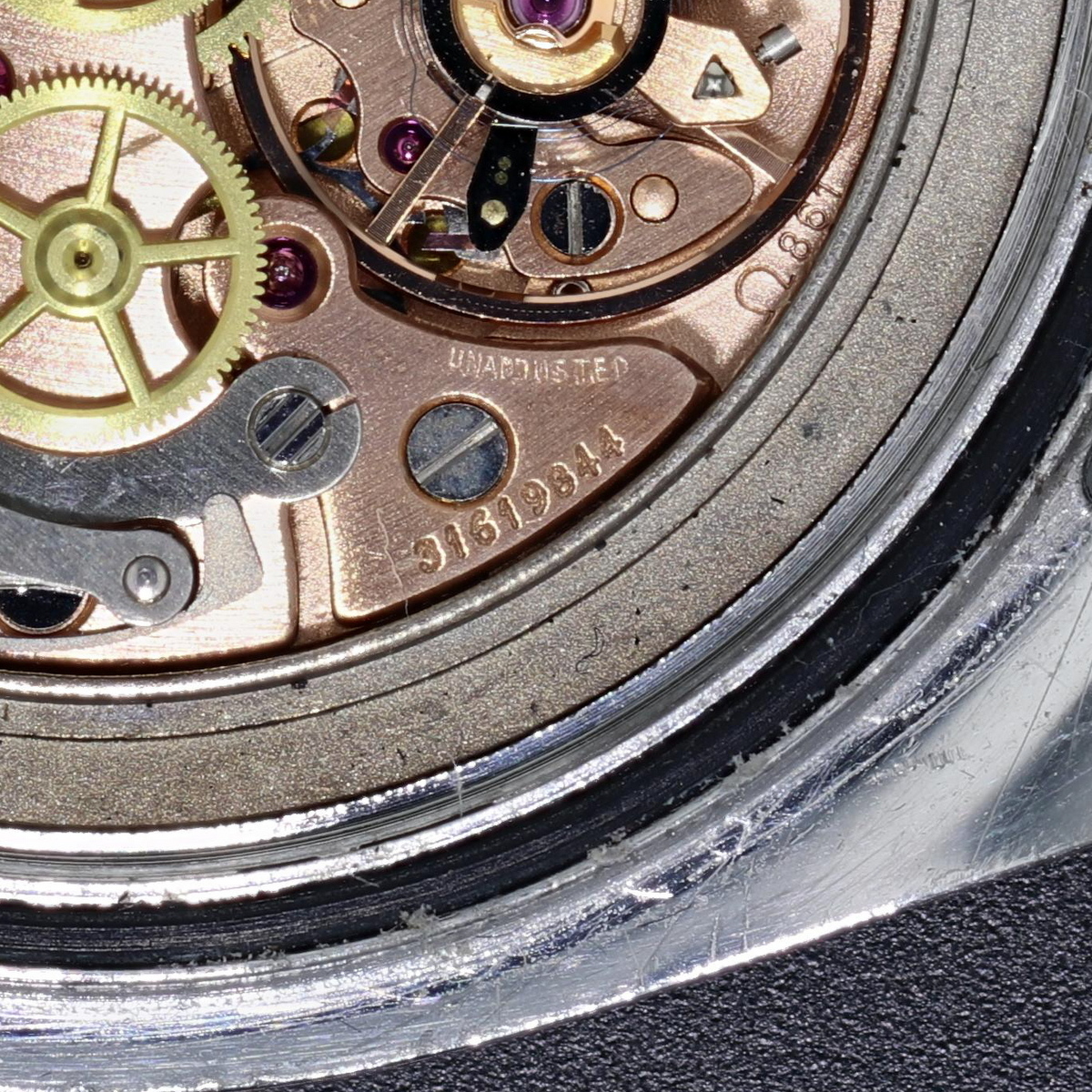
Here we see the eight digit serial numer, close to the Omega signed 861.
Armed with the calibre, and the case reference we can check the movement serial falls within accepted ranges for the reference.
The only sure fire way to know if the watch you are looking at is correct is to spend CHF120 with Omega and order an extract. You can do that here
Now there is a very useful online tool over at ilovemyspeedmaster.com And this will give you a good idea. However it will not guarantee your movement is a speedmaster movement, only a very good indication of when it was produced, assuming it is a speedmaster movement.
Interestingly when you run this number through the ilovemyspeedmaster.com engine it returns a production date of June 1971, and this watch actually has an extract stating 17 June 1971
Case Types: Asymmetric or Straight ?
“Straight Lugs” 19mm between lugs
Examples of each straight lug reference. 2915 2998 105.002 105.003. Note the pushers and crown are exposed
“Asymmetric Lugs” 20mm between lugs
Examples of asymmetric reference 105.012 145.012 145.022-69 Note the pushers and crown are slightly protected.
The case reference is engraved in the inside of the case back. Later references, from 2998-61, carry a two digit year after the reference.
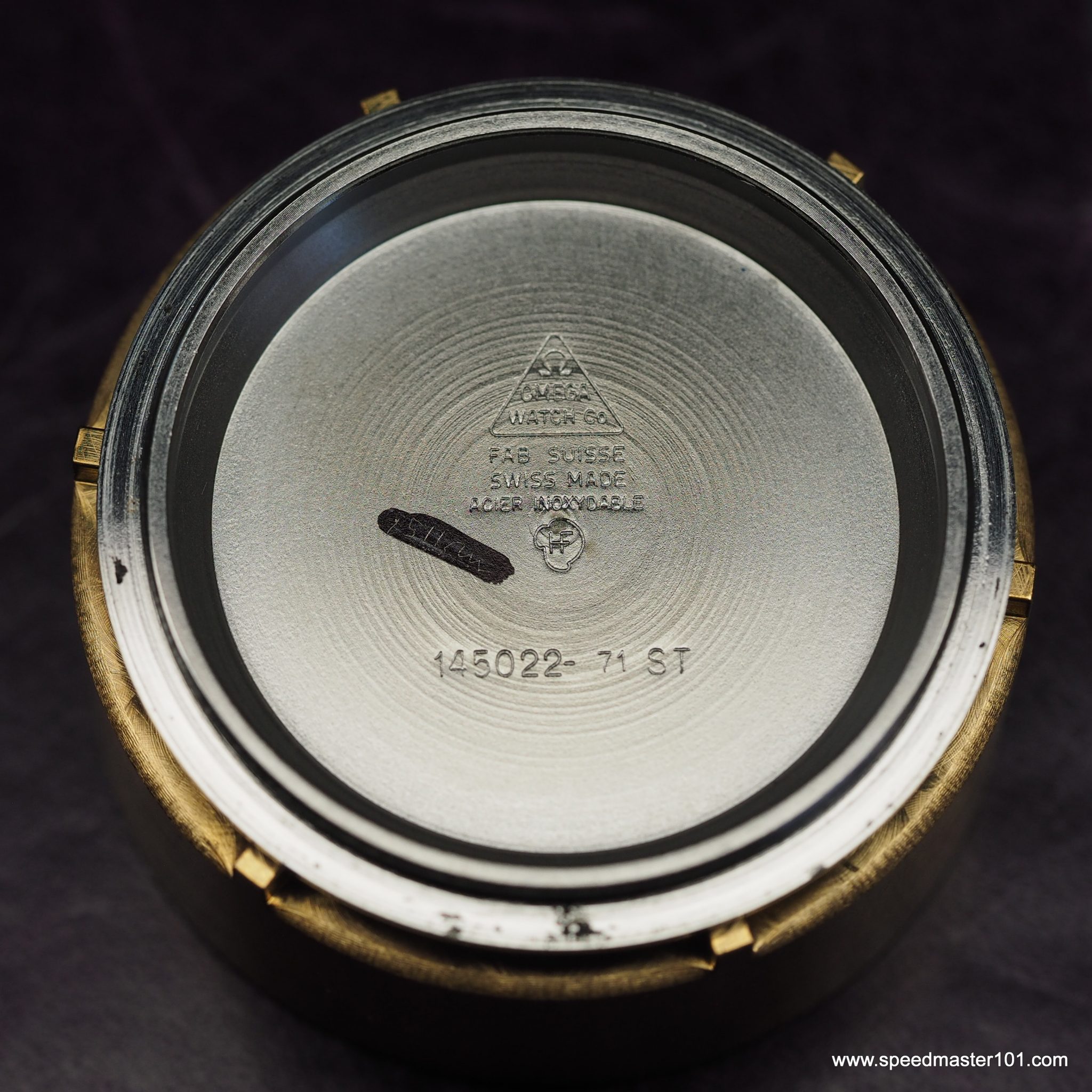
- The asymmetric case came in both calibres,
- The straight lug only carried a 321.
- The 861 was only used in the asymmetric case.
- The full list of references and sub references is here.
So now you know what you have the Serial, Calibre, and the Case Reference:
Now you know this, you can check the serial is good for the reference. The watch might already come with an extract, which will show the date of production and the country of delivery.
Next we move on to Originality, and Condition.
Originality
Using the following pages that detail each reference, you can establish the likelihood of the watch being original, or at least looking original. We are looking at probabilities, as we cannot be sure if a watch has the same equipment as when it left the factory. I have seen 2998’s with superliminova hands where the owners swear it has never been serviced. People are not necessarily dishonest, but manage to tell themselves a story so many times they believe it. Trust no one.
My goal is to have a watch that looks as original as possible.
The heart of the watch is the dial. If a watch has new dial and hands, or case it is not interesting. For example Omega supply an asymmetric service case for 321’s called a 145.0012. I have seen more than one watch built up into one of these cases.
Box and Papers can be a red herring and, many times, are a married set – ie not original. If a document has a serial on it then that’s interesting, and does add value (much more now than five years ago when this site was written). However when choosing between two watches, I will always choose the better condition over the paperwork. If I am offered a NOS watch and it doesn’t have B&P’s, then I wonder how it was completely unused and yet lost those? My advice is do not put too much store in B&P’s. Buy the watch, not the papers.
We must go through the watch under consideration carefully checking that each part is original specification, undamaged and in good condition. In order of importance by value are:
- The Dial
- The Case
- The movement
- The bezel
- The hands
- The pushers
- The Crown
Note: In the 861 references the dial value is less than the case, however I still base my decision primarily on the dial, then consider the case.
In the older references the cases are almost always polished, or worn. The dials can fade, and this fade can either add value or reduce depending if it is attractive or not. The movement can almost always be saved, and hands and bezels are service parts so often replaced with incorrect ones, but these are an simple fix, if more expensive and getting harder to find now than before.
Things that will stop me buying a watch are a damaged case, either by corrosion or trauma, and a damaged or refinished dial.
The one thing that I will buy a watch for, even if everything else is wrong, is the dial. If the dial is nice, I want it. The dial is the heart of the value. A 2998 dial is worth 6000 to 12,000, perhaps more if it is very nice – but that is so unlikely to find loose today.
Condition
We are talking about vintage tool watches. As of 2016, the youngest is around 38 years old. A 2915 will be over 58 years old. There will be a balance to be found between age and condition. If I sought only collector quality faultless watches I would have only one watch – and for some people that is enough, and they wont be happy with anything less. It took me 10 years to find that watch, and the only reason I recognized for what it was, is because of the others I had bought. That’s just me. I buy watches in less than perfect condition, but I modify my bid. But then I also enjoy watches that honestly show their history, dents, scratches damage and all.
Remember these are tool watches, not dress watches. The standard of condition is much higher for dress watches, where I would expect to see less evidence of use.
Things that will stop my buying a watch altogether:
- an over polished case
- new or badly damaged dial
- water damaged movement
The dial and the case are the two most valuable parts of the watch. If they are damaged or unattractive, the value is dramatically impacted.
This 2998 is in Excellent condition. In fact it is let down only by the presence of a DO90 bezel. As this is a 2998-2 you will note from the page on this reference that it should have the BASE1000 bezel. Even though this DO90 bezel is in fantastic condition.
So when using the chart, I would value it using the 2988-3 figures, as it lacks the correct bezel.
So technically it is not original, lacking the BASE1000 bezel, but it is still very valuable.
145.012 this watch has an extract of the Archives, and just serviced so it is perect for use. What also makes it perfect for use is the bezel, which is not perfect and so it is less risk. (Bezels have been known to fall off or get damaged). The dial plots are pleasantly aged and the watch has a strong overall attraction
The watch is in overall very good condition, but with a good bezel. It appears completely original, but will be down valued slightly from the “Very Good” category because of the “Good” Bezel.
This is a watch that you cannot use the chart to value. It has had major parts replaced by modern Omega Service parts, and as such needs to be valued only on the remaining vintage parts. In this instance the movement and the case.
To value the movement we would need to ensure it can get an extract showing 2998, or we would have to value it as for a Seamaster.

Age Damaged (Saved)
This was a very cheap buy on ebay (you don’t get that anymore). It came from South America and had an awful dial, and the hands had been painted badly. It had no bezel. In the event the movement was not only correct, (it got an extract) but after servicing it looked brand new.
Water damage (terminal)
I bought this on Ebay -I thought it was possible to save it but in the event of dismantling it i could get no further than de-casing the movement and dial – these had fused together. In the end I sold the movement and dial to a German buyer, but unfortunately the post lost it, and so we never got to find out if it was salvageable.
An example of Patina vs Condition:
The above photo shows three identical references, with the exception of the production date. The far right hand watch has a dial and handset the same colour as when they left the factory. On the left, the two dials have degraded to a pleasing brown colour, and the hands have also changed. This kind of degredation is valued. The watch in the centre cost more than the two either side combined.
Which brings me to another important point. It is quite possible to pick up a pleasingly degraded watch for less than a good condition one. The value only appears once WE, the buyers, value it. Sometimes a degraded watch gets into the hands of an Italian or French dealer, where they give it a kiss of approval and off it goes into a rich collectors pocket for $20,000+.
Now we can look at the individual references, starting with the 2915

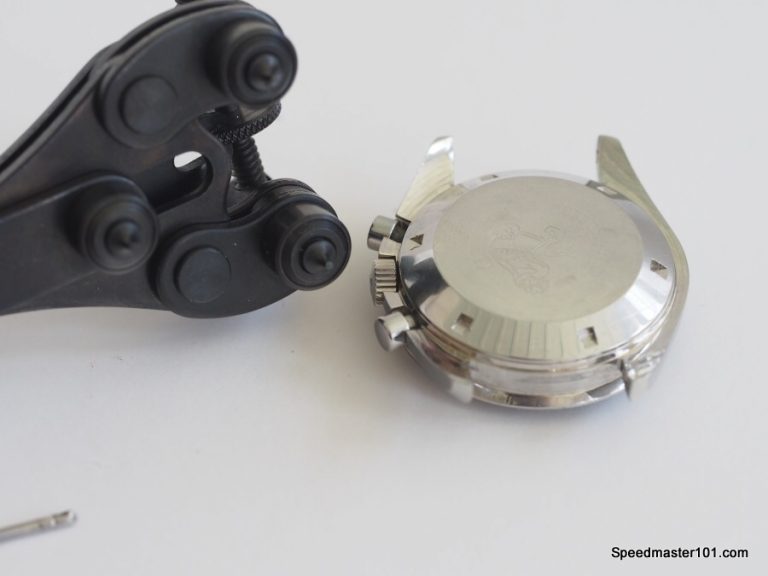
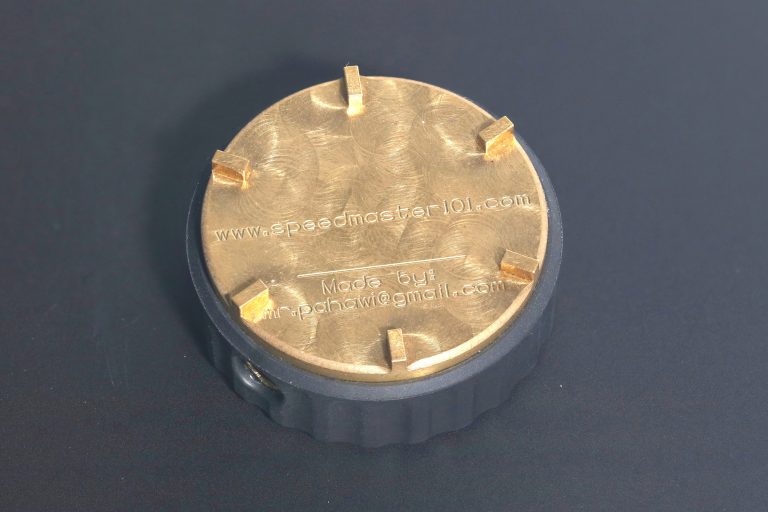
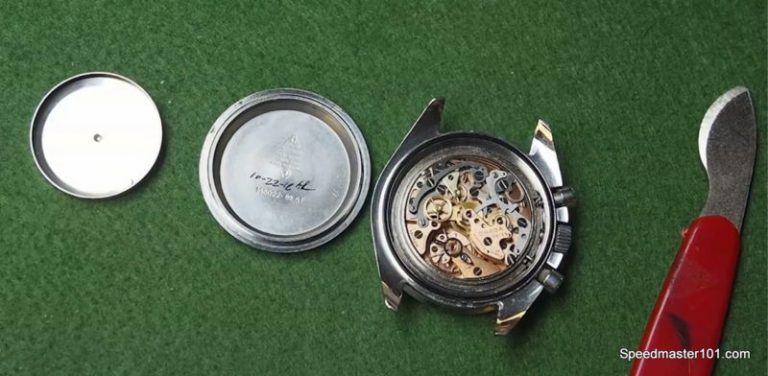
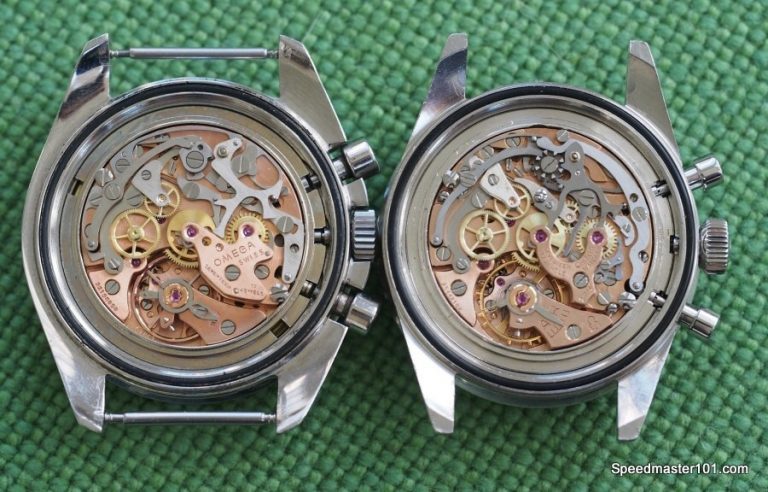
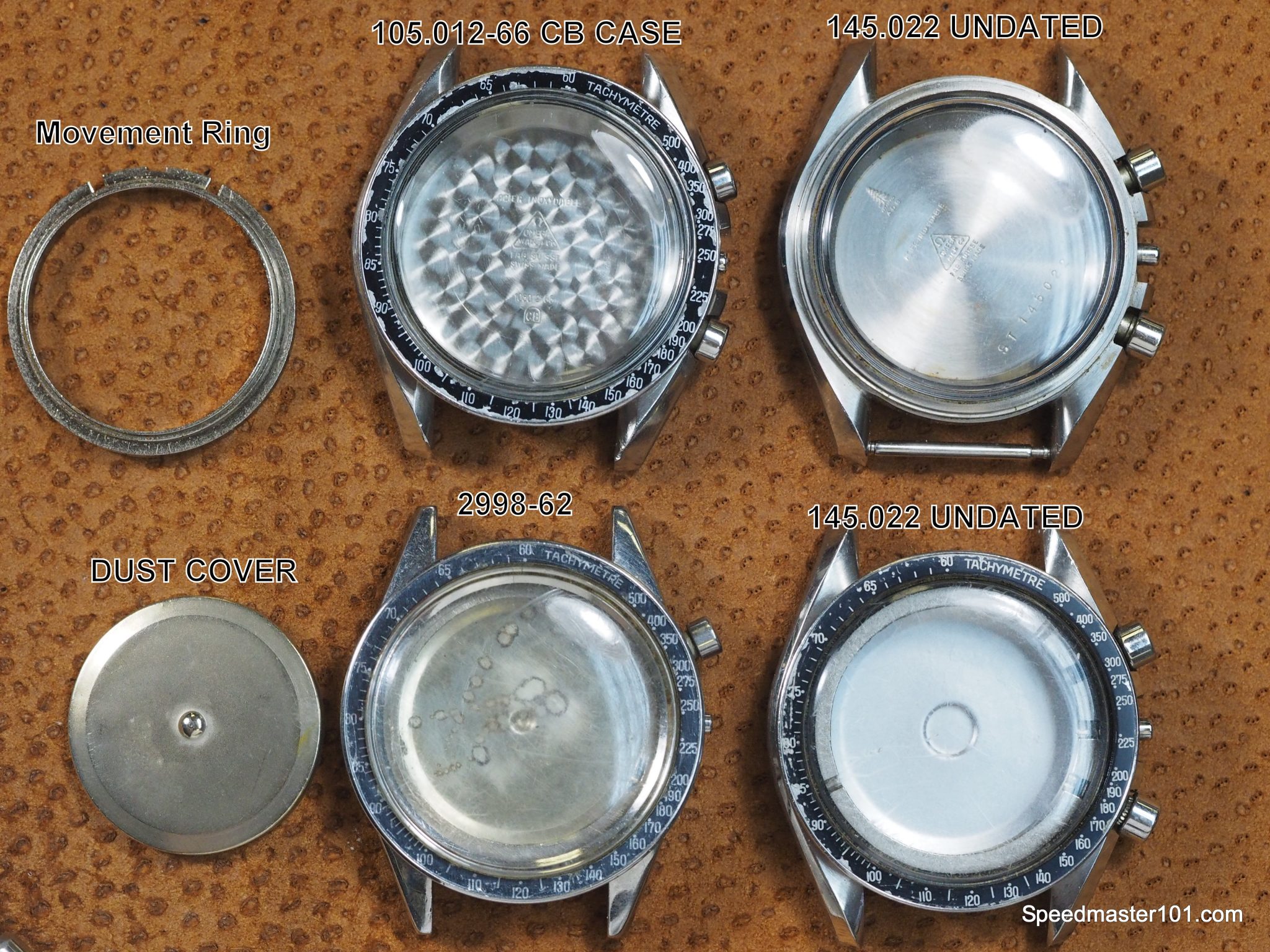
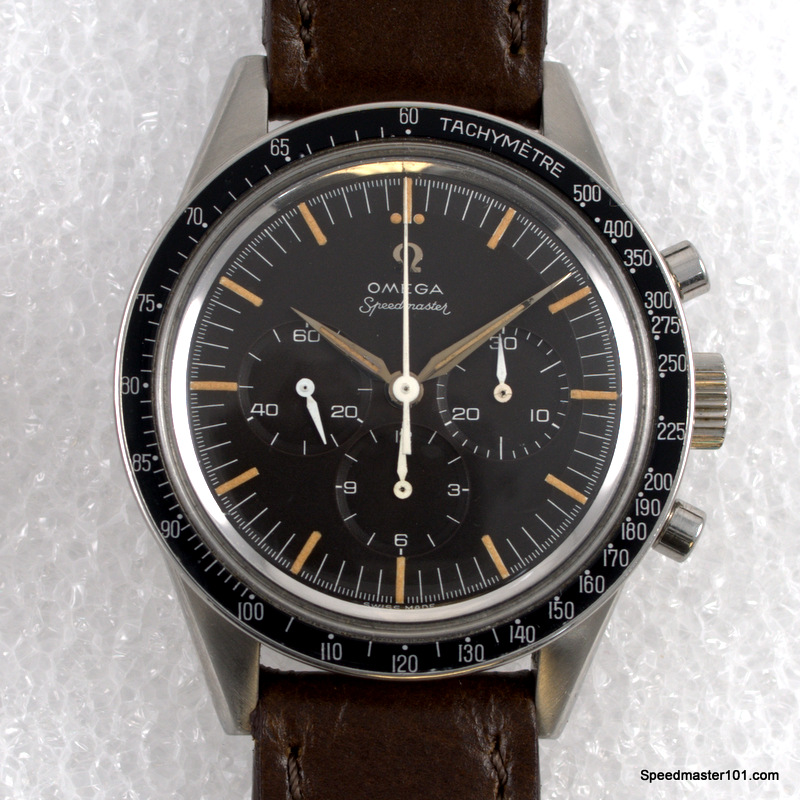
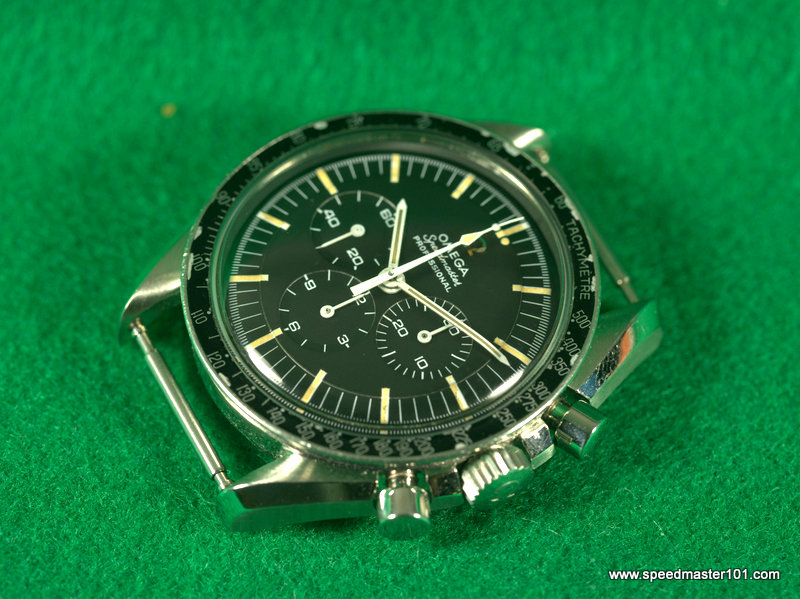
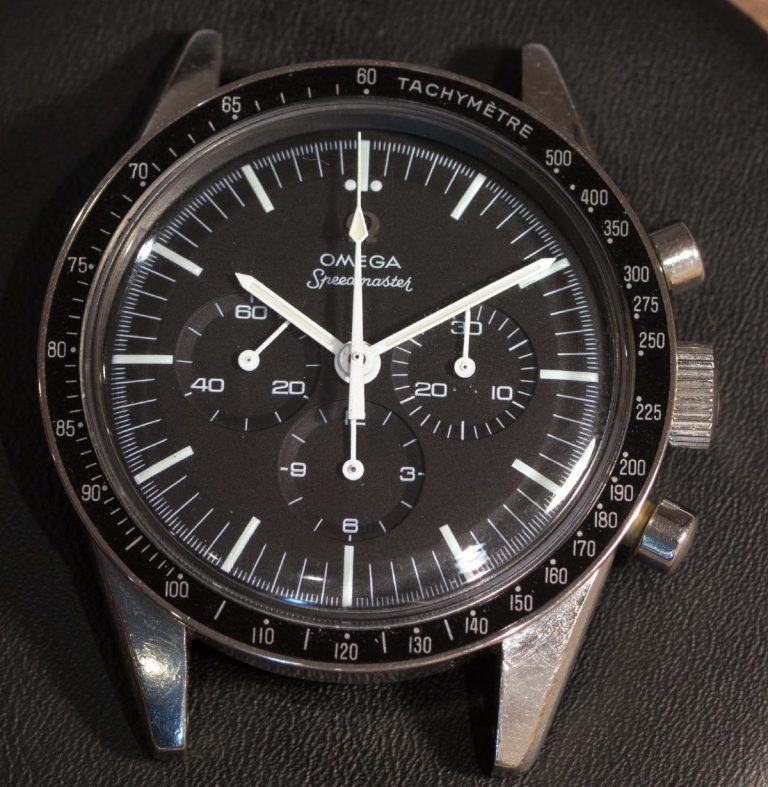

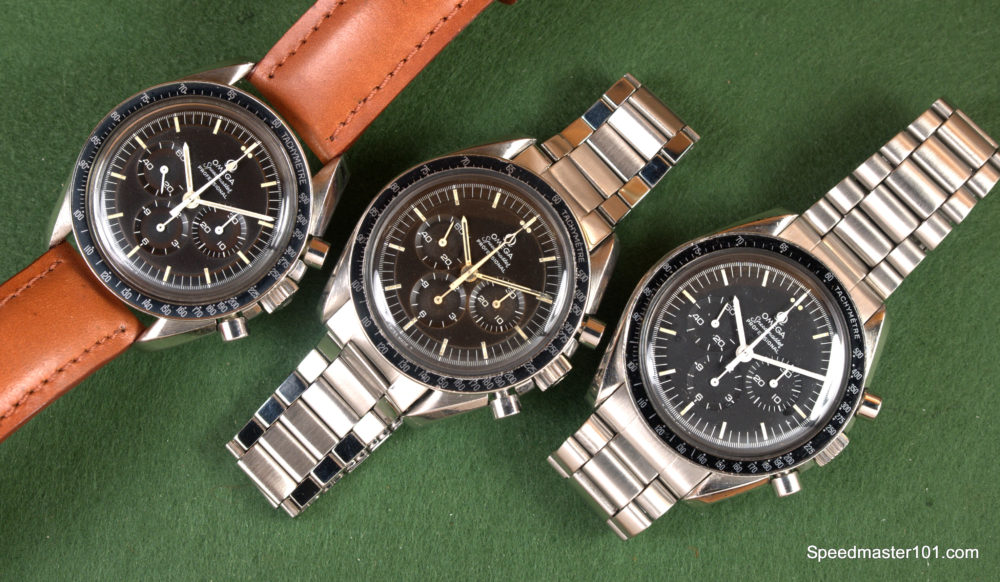
You must be logged in to post a comment.